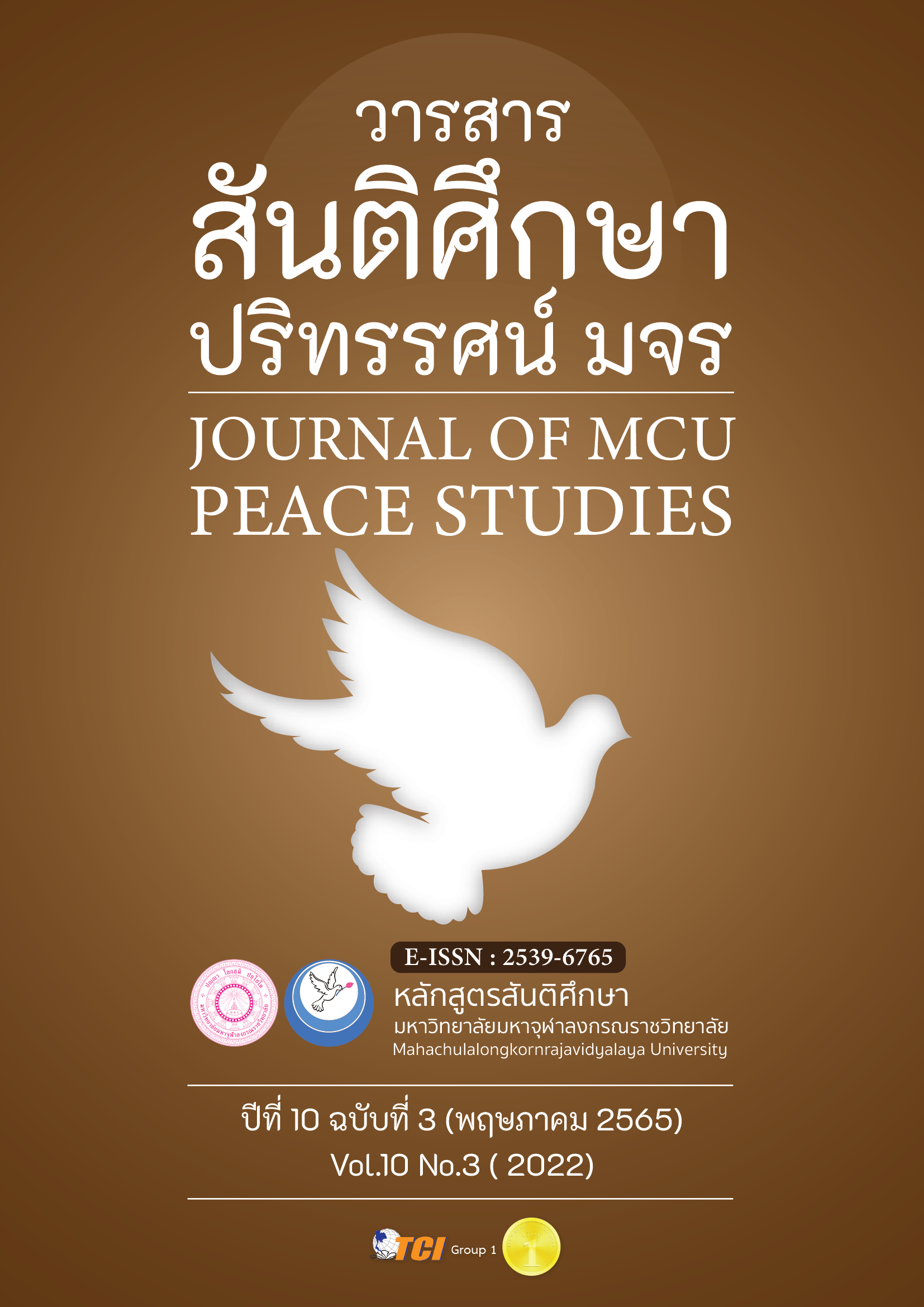ความต้องการจำเป็นและองค์ประกอบเชิงยืนยัน: ทักษะกระบวนการคิดวิจารณญาณ, ทักษะกระบวนการคิดตัดสินใจ, ทักษะกระบวนการคิดสร้างสรรค์ และทักษะกระบวนการคิดแก้ไขปัญหาของนักศึกษาครูในภาคตะวันออกเฉียงเหนือ
Main Article Content
บทคัดย่อ
บทความวิจัยมีวัตถุประสงค์เพื่อ 1) ศึกษาสภาพปัจจุบัน สภาพที่พึงประสงค์และความต้องการจำเป็นในการพัฒนาทักษะกระบวนการคิดขั้นสูงของนักศึกษาครู กลุ่มตัวอย่าง คือ อาจารย์ผู้สอนคณะครุศาสตร์/ศึกษาศาสตร์ มหาวิทยาลัยในกำกับของรัฐในภาคตะวันออกเฉียงเหนือที่ได้จากการสุ่มแบบหลายขั้นตอน จำนวน 291 คน เครื่องมือที่ใช้ในการวิจัย คือ แบบสอบถามความคิดเห็นที่มีค่า IOC= .80 และมีค่า r= .824 วิเคราะห์ข้อมูลโดยหาความถี่, ร้อยละ, , S.D. และค่าดัชนี PNI Modified และ 2) วิเคราะห์องค์ประกอบเชิงยืนยันทักษะกระบวนการคิดวิจารณญาณ ทักษะกระบวนการคิดตัดสินใจ ทักษะกระบวนการคิดสร้างสรรค์ และทักษะกระบวนการคิดแก้ไขปัญหาของนักศึกษาครู กลุ่มตัวอย่าง คือ นักศึกษาคณะครุศาสตร์/ศึกษาศาสตร์ มหาวิทยาลัยในกำกับของรัฐในภาคตะวันออกเฉียงเหนือ ที่ได้จากการสุ่มแบบหลายขั้นตอน จำนวน 2,600 คน เครื่องมือที่ใช้ในการวิจัย คือ แบบสอบถามสำหรับวิเคราะห์องค์ประกอบเชิงยืนยัน จำนวน 4 ฉบับ แต่ละฉบับมีค่า IOC= .80, .80, .90, 1.00 มีค่า r= .927, .858, .943 และ .916 ตามลำดับ วิเคราะห์องค์ประกอบเชิงยืนยันด้วยโปรแกรม AMOS Version 23.0
ผลการวิจัยพบว่า 1) การพัฒนาทักษะกระบวนการคิดขั้นสูงของนักศึกษาครู มีสภาพปัจจุบันโดยรวมอยู่ในระดับปานกลาง ( = 2.82, S.D.= 4.34) มีสภาพที่พึงประสงค์โดยรวมอยู่ในระดับมากที่สุด (
= 4.57, S.D.= 3.61) และมีความต้องการจำเป็นเร่งด่วนในการพัฒนาทักษะกระบวนการคิดสร้างสรรค์ (PNI= .40), ทักษะกระบวนการคิดวิจารณญาณ (PNI= .38), ทักษะกระบวนการคิดแก้ไขปัญหา (PNI= .37) และทักษะกระบวนการคิดตัดสินใจ (PNI= .36) ตามลำดับ 2) โมเดลองค์ประกอบเชิงยืนยันของทักษะกระบวนการคิดวิจารณญาณ ทักษะกระบวนการคิดตัดสินใจ ทักษะกระบวนการคิดสร้างสรรค์ และทักษะกระบวนการคิดแก้ไขปัญหาของนักศึกษาครูมีความสอดคล้องกลมกลืนกับข้อมูลเชิงประจักษ์
Article Details

อนุญาตภายใต้เงื่อนไข Creative Commons Attribution-NonCommercial-NoDerivatives 4.0 International License.
ทัศนะและความคิดเห็นที่ปรากฏในบทความในวารสาร ถือเป็นความรับผิดชอบของผู้เขียนบทความนั้น และไม่ถือเป็นทัศนะและความรับผิดชอบของกองบรรณาธิการ ยินยอมว่าบทความเป็นลิขสิทธิ์ของวารสาร
เอกสารอ้างอิง
Alfaro-LeFevre, R. (2019). Critical Thinking and Clinical Judgment: A Practical Approach. (7th ed.). Philadelphia: PA.: Elsevier.
Bandrowski. (1996). Integrating the internet in the science classroom. Retrieved March 3, 2022, from https://kenaco.telebyte.com/billband/presentation.html
Beyer, B. K. (1985). Critical thinking: what is it?. Social education, 25(4), 269-308.
Byrne, B. M. (2010). Structural equation modeling with AMos: Basic concepts, applications, and programming. (2nd ed.). Mahwah, NJ: Erlbaum.
Chadcham, S., & Kornpetchpranee, S. (2003). Structural equation modeling. Journal of Educational Research and Measurement, 1(1), 1-24.
De Bono, E. (2016). Lateral thinking: A textbook of creativity. London: Penguin Books.
Decaroli, J. (1973). What research say to the classroom teacher: critical thinking. Social education, 37(1), 67-68.
Dewey, J. (1993). How we think. New York: D.C. Health & Company.
Diamantopoulos, A., & Siguaw, J. A. (2000). Introducing LISREL: A guide for the uninitiated. Thousand Oaks. CA: Sage.
Dressel, & Mayhew. (1957). General education: exploration in evaluation. Washingtion, D.C.: American Council on Education.
Eisenfuhr, F. (2011). Decision making. New York: Springer.
Ennis, R. H., & Millman, J. (1985). Cornell critical thinking tests level X & level Z-manual. (3rd ed.). California: Midwest Publication.
Galotti, K. M. (2013). Cognitive psychology: In and out of laboratory. (5th ed.). Canada: SAGE.
Gazzaniga, M.S. (2009). The cognitive neurosciences. (4th ed.). London: The Mit Press.
Good, C. V. (1973). Dictionary of Education. New York: McGraw-Hill Book Company.
Guilford, J. P., & Hoepfner, R. (1971). The Analysis of intelligence. New York: McGraw-Hill.
Hair, J. F., Black, W. C., Babin, B. J., & Anderson, R. E. (2010). Multivariate data analysis: A globalperspective. (7th ed.). Upper Saddle River, NJ: Pearson Education.
Hu, L.-T., & Bentler, P. M. (1999). Cutoff criteria for fit indexes in covariance structure analiysis: Conventional criteria versus new alternatives. Stuctural euation modeling, 6, 1-55.
Isaksen, S. G., & Dorval, K. B., & Treffinger, D. J. (2011). Creative approaches to problem solving: A frame work for innovation and change. New York: Sage.
Khemmani, T. (2011). Analysis, Synthesis, Creative and critical thinking skills: Integration in teaching-learning plan. The journal of the royal institute of Thailand, 36(2), 188-204.
Kline, R. B. (2011). Principles and practice of structural equation modeling. (3rd ed.). New York: Guilford Press.
Krulik, S., & Rudnick, J. A. (1993). Reasoning and problem solving. Massachusetts: Allyn & Bacon.
Laskey, K. B., & Campbell, V. N. (1991). Evaluation of an intermediate level decision making to dole scents. illsdale: Lawrence Erlbaum Associates. Ministry of Higher Education, Science, Research and Innovation:
MHESI. (2021). Research and Innovation. Retrieved June 30, 2021, from https://data.go.th/dataset/univ_std _11_01
Norris, S., & Ennis, R. H. (1989). Evaluating critical thinking. Pacific Grove, CA: Midwest Publications.
Office of the Education Council. (2019). Proposals for the Second Decade of Education Reform (2009-2018). Bangkok: Prig Wan Graphic.
Osborn, A. F. (1963). Creative imagination. (3rd ed.). New York: Charles Scridners Sons.
Plsek, P. E. (1997). Creativity, innovation, and quality. Milwaukee, Wis.: ASQC Quality Press.
Pornkul, C. (2014). Teaching think processes: Theory and application. (3rd ed.). Bangkok: ChulalongkornUniversity Printing House.
Robertson, I. T., & Smith, M. (2001). Personnel selection. Journal of Occupational and Organizational Psychology, 74(4), 441-472.
Sakulsriprasert, C. (2013). Confirmatory factor analysis. Journal of Clinical Psychology, 44(1), 1-16.
Schumacker, R. E., & Lomax, R. G. (2010). A beginner’s guide to structural equation Modeling. (3rd ed.). New York: Taylor & Francis.
Sinlarat, P. (2018). Education 4.0 is more than education. (5th ed.). Bangkok: Chulalongkorn University.
Simon, H. A. (1997). Administrative behavior: A study of decision-making processes in administrative organizations. (4th ed.). Bangkok: The Free Press.
Siphai, S., & Sinlarat, P. (2018). Thailand's Educational Transformation towards Education 4.0. Journal of Educational Measurement, Mahasarakham University, 24(2), 13-27.
Sternberg, R. J. (2009). Cognitive psychology. (5th ed.). Belmont, CA: Wadsworth.
The institute for the Promotion of Teaching Science and Technology: IPST. (2021). PISA 2018. Retrieved February 17, 2021, from https://pisathailand.ipst.ac.th/pisa2018-fullreport/
The martin prosperity institute: MPI. (2015). The global creativity index 2015. Rotman school of management. University of toronto’s. Retrieved March 1, 2022, from https://www.cea.or.th/th
Torrance, E. P. (1992). A national climate for creativity and invention. Gifted child today, 5(1), 10-14.
Treffinger, D. J. (2005). Creative Problem Solving: an introduction. Waco, TX: Prufrock Press.
Verma, D. (2014). Study and Analysis of Various Decision Making Models In An Organization. IOSR Journal of Business and Management, 16(2), 171-175.
Wallach, M. A., & Kogan, N. (1965). Modes of thinking in young children: A study of the creativity-intelligence distinction. New York: Holt, Rinehart and Winston.
World Economic Forum. (2020). The Future of Jobs Report 2020. Retrieved March 1, 2022, from https://www.weforum.org/reports/the-future-of-jobs-report-2020/in-full/
Yildiz, K. (2012). Primary School Principals Decision Making Styles. Sakarya University Journal of Educational Faculty, 24(1-7), 104-133.
Weir, J. P. (1974). Problem solving is everybody's problem. Science teacher, 4(4), 16-18.


